Sticky fingers – the enduring appeal of football stickers
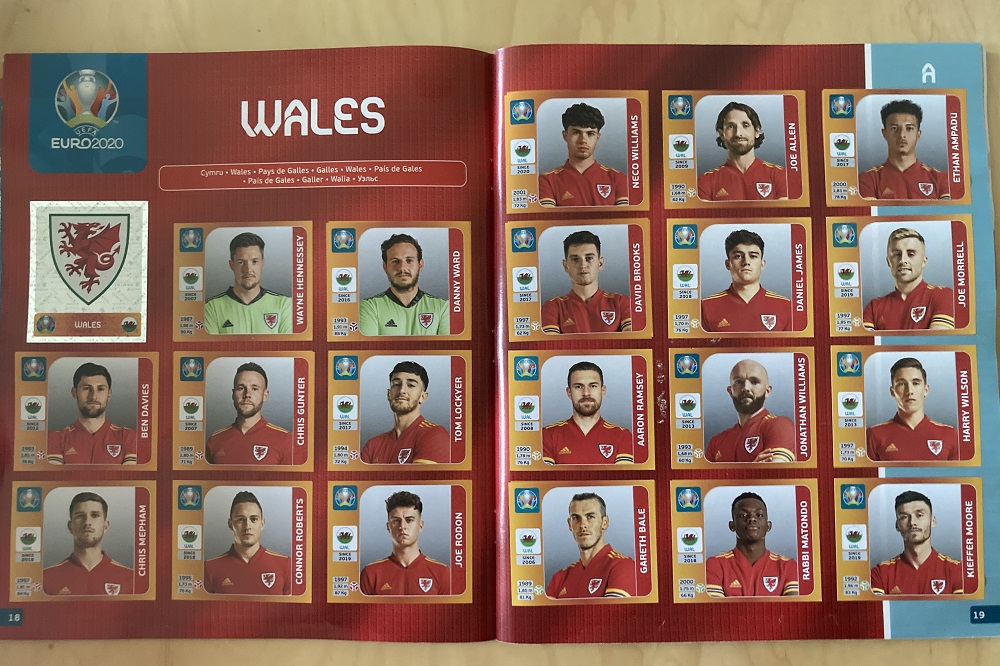
David Owens
Greg Lansdowne is a man much in demand.
The UK’s leading authority on football stickers admits that every time a major international football tournament comes around, he’ll get a call from journalists eager to quiz him on the enduring nature of a hobby that has fired the imagination for decades.
In fact, 2021 will mark the 60th anniversary of the company that kickstarted the sticker revolution, Italian company Panini.
A new collection for the delayed Euro 2020 tournament has seen generations of collectors, young and old, buying stickers in greater numbers than ever before.
There appears no end to the popularity of football stickers and, for Greg, the author of Stuck On You: The Rise & Fall & Rise Of Panini Stickers, and the man behind the documentary Got, Got, Need! The Story Of Panini Stickers, it’s another busy time.
“I did my book which came out early 2015, then we had Euro 2016, the documentary came out 2017, we had World Cup 2018 and then also when Panini got the licence for the Premier League album, which they’ve never had before, in 2019,” he says pointing out the constant turnover of albums and sticker sales.
“So there seems to be something all the time and, again this year, because not only is it another new album, which obviously is a year late, this year is also the 60th anniversary as well.”
During those six decades the industry has changed dramatically, with the advent of trading cards and online collecting – but what has remained constant has been that little peel-back football sticker.
“The collectibles industry has changed massively, especially over the last 18 months, basically since the pandemic, we’ve been getting an influx of collectors from America, who all of a sudden have latched on to football or soccer, as they will call it, collectibles,” says Greg.
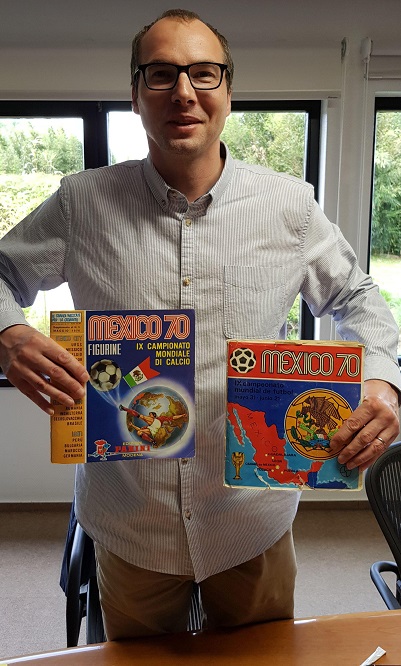
It’s boom time for collectors and especially those in possession of rare stickers and collectible cards, as evidenced by a recent world record auction of one particular highly-prized sticker.
“Diego Maradona’s first Panini sticker went for $150,000 a few weeks ago and I’m sure it’s only a matter of time before the first million pound football or soccer card happens in America,” says the sticker expert.
Like many generations of kids, Greg’s own particular rites of passage began as a young boy growing up in East London in a football-mad family.
“In the late 1970s, my brother, Billy Lansdowne, was a young player at West Ham United,” he recalls. “He was obviously very keen on football and he was a lot older than me – he’s 14 years older than me. He was in the West Ham first team squad and I was five or six years old.
“So his first way to encourage me to get into football was to buy a copy of Shoot magazine, which gave away a free copy of the Football 79 album. And, from there, he encouraged me and kept buying me packets.
“That album really got me through the next few months. And I got so, so close that I was only one short of finishing the album, which is the St Mirren badge. Whenever I see the name St Mirren, I always think that I was one short of finishing the album.”
Did Greg ever think of trying to complete his album?
‘Cheating’
“No, because I now feel that that album should always remain one sticker short. That was how it was at the time. And I just think it would be cheating now to get it more than 40 years later.
“But that, to me, is what sticker collecting is about. Lots of people think about players from their childhood as either a recurring sticker that seemed to come in every packet or the one that got away.”
The 47-year-old also admits that collecting football stickers was as much educational as it was enjoyable.
“I knew nothing about football before I started collecting,” he says. “But once I’d got that album, at five years old, it just opened up a whole world where you were being introduced to all the players or the kits and the badges. You’ve got to learn about the players and learn about the history. That album was my grounding in football and I never looked back from there.”

As for Greg’s brother, Billy, it appears he was enshrined in a sticker book of his own.
“From West Ham he went to Charlton and he is featured in one of the team stickers in a UK album, but then he went to play in Sweden and got his own individual sticker in a Swedish football album. So I can even collect my own family,” he laughs.
And it appears the family links don’t stop there.
“As an aside, not stickers but cards, my dad played for West Ham in the 1950s and 1960s and Bobby Moore’s first card that he appears on, which is a team group, he is in the back row alongside my dad, Bill Lansdowne. We’re not very imaginative with names in our family,” he jokes.
For sticker collecting youngsters in the UK, the big breakthrough came in 1977.
“The album that started it all in this country was called Euro Football,” remembers Greg. “That was Panini’s real big breakthrough into the UK, that was the first fully-fledged album where they put all their branding on. And they gave it away with Shoot magazine.
“I mention this a lot in the Stuck On You book, it’s interesting because at that point, nobody has heard of Panini, but everyone’s heard of Shoot magazine. So Panini courted Shoot, to get their album and stickers given away with Shoot.
“But within a couple of years, once they realised that it massively boosted sales for the magazine when that issue came out with the free sticker album, Shoot and (rival football magazine) Match, were then competing to get the rights to give away the album.
“So they were then paying Panini rather than Panini paying them.
“Things changed massively in just a couple of years because the sticker album was such a huge hit.”
My own sticker collecting experience was forged around a similar time. Greg and I are similar ages. What struck me was how similar so many of our stories are. And how much of my geographical prowess and knowledge about world football began collecting stickers.
“Particularly the World Cup and the Euro albums,” concurs Greg. “I would say most of my geography knowledge, as I was growing up, was learned through sticker albums. I would never have heard of most of these places. And, don’t forget, they also translated the team and country’s name into several languages. So, in the Europa 80 album, you had Switzerland, which was Helvetia, and Greece was Hellas.
“I would never have known that was the name in their own language.”
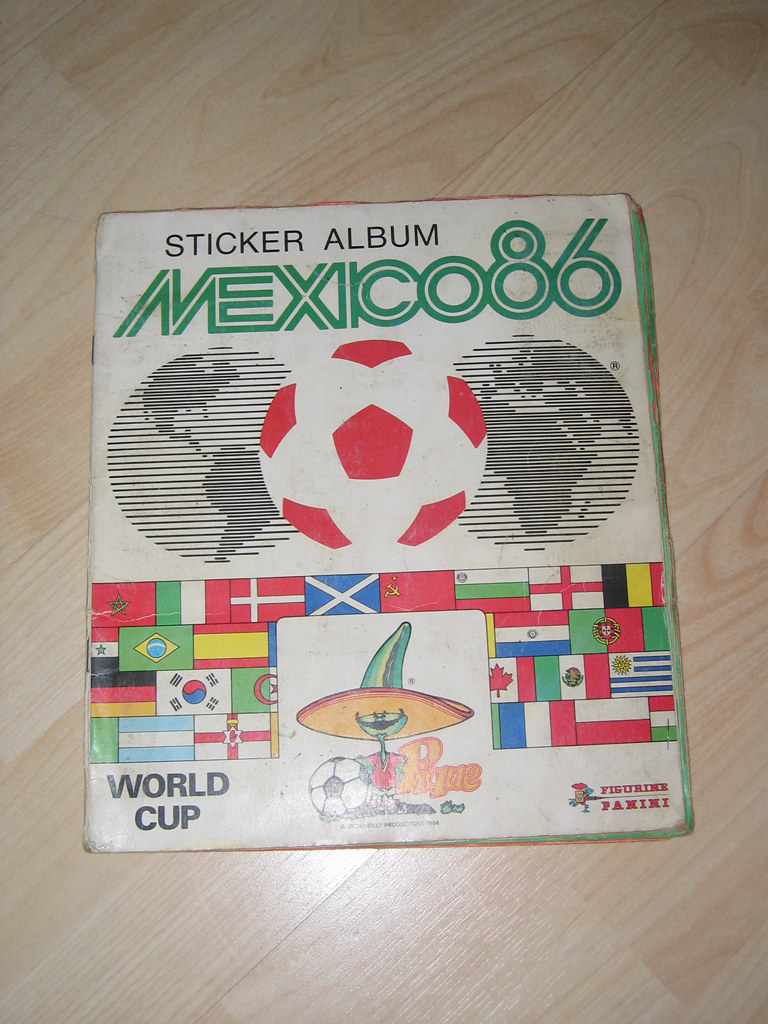
Collecting itself has changed hugely over the years. When Greg and I were growing up, when we hit our mid- to late-teens, collecting stickers wasn’t as alluring, only in middle age have we rediscovered our love of sticker collecting. Much of this is built on nostalgia, but also the advent of the internet.
“I think most people have that experience,” says Greg. “But back then it was a different time. When I left school there was no internet. So, obviously, we lost our playground, where we would do our swapping and back then there was no cyber playground.
“Also, these days, it is a far greater adult pastime, whereas pretty much no adult was collecting stickers in the 1980s and 1990s.
“So, for instance, I hear about a lot of people at university now who collect stickers. It’s seen as a bit of a cultural thing and it’s almost trendy to be doing it at university with your friends.
“Whereas when I was in university in the 1990s, you would have been laughed out of the common room if I’d asked anyone if they wanted to swap USA 1994 stickers. Nobody was doing it.
“It’s changed now and the internet has contributed to that. But also, for example, in 2014, Ed Sheeran was posting his swaps for the 2014 World Cup album on Twitter.
“When somebody popular like him gets involved with it, all of a sudden, even if it was geeky and nerdy before, all of a sudden, well, oh, actually, maybe it’s not. In America, for example, (film star) Mark Wahlberg’s kids have got a YouTube channel where they open boxes of trading cards. So there again that makes it more trendy rather than the stereotypical image of someone like a comic book guy.
“When it comes to collecting comics, there’s probably a similar character that people used to associate with collecting football stickers and sports cards in general. But that has changed. Even my friends, when they see headlines that cards go for millions of pounds, all of a sudden they start thinking, oh, actually, it’s not quite as geeky as I thought it was, I might start getting interested in that.”
Greg’s epiphany and the reason he wrote Stuck On You came when he rediscovered his sticker album collection from his youth.
“In around 2013 I rediscovered my old albums from the late-1970s through to the 1990s in my parents’ house and then when the World Cup 2014 album came out and, for the first time in the UK, you could get the album free in supermarkets and newsagents, it was a lot more accessible.
“So I thought to myself I think I might have a go collecting stickers in real time for the first time since the early-1990s. I enjoyed it so much that I finished the album twice. Because, obviously, now rather than relying on your parents to buy one or two packets at a time, I could buy a box and there was the cyber playground so you could swap on Facebook, Twitter and I also used a site called Swap Stick.
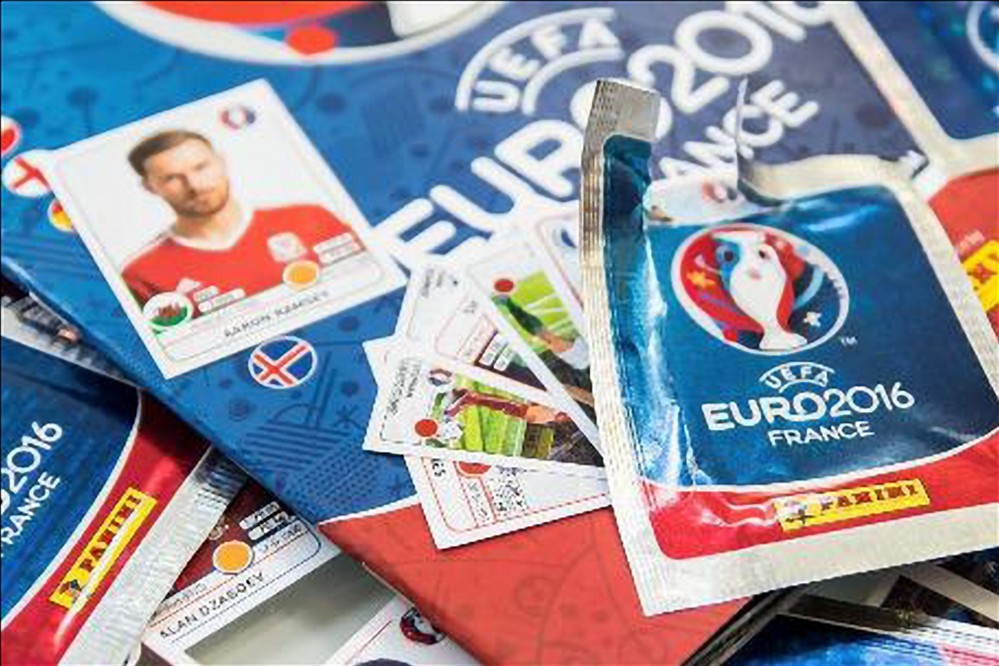
“Some of my friends were doing it and loved it. And that inspired me to think more about Panini and how, while sticker collecting is massive, nobody really knows anything about Panini. I thought it would be interesting to find out a bit more about them. And that’s what happened with Stuck On You.
Greg’s book covers Panini but also the intriguing sticker wars that have been fought in the fight for sales betweens rival companies such as Merlin and Topps, who at various points have led the sticker market in the UK.
“It is not just about Panini, it’s about all football stickers,” says Greg. “I discovered that it was so much more intriguing than I could ever imagine. And much more cut-throat than you would think for what appears to be such a wholesome industry and hobby.
“But, obviously, whenever you’ve got more than one company in an industry, they’re all trying to get one over on each other.
“Even since writing the book I’ve found so much more out about it and it’s just a very interesting industry. What we have here in the UK and Europe is nothing compared with the USA in terms of how big it is. They’ve got hundreds of shops dedicated to sports cards and I think this is now starting to very slowly filter through to the UK.”
There is much to be said for sticker collecting not only as a satisfying hobby but also for the
psychological benefits it can bring. This has been borne out during the pandemic, where everyone’s mental health has been tested to one extreme or another. For those adults losing themselves in their hobby, sticker collecting allows for pure escapism and for many indulging in a little nostalgia is never a bad thing.
“You think of those kids who are adults now who read Roy of the Rovers comics, played computer games, flew around on scooters and skateboards, everybody wants to regress, especially in recent times. Life is so hard, we all want to go back to when life was easier.
“Collecting stickers back then, life was easier for most people when we were children and all we needed to worry about was where the money was coming from to get our next packet of stickers and then going into the playground and being part of a community swapping stickers.
“It was great fun then and if you get a community doing the same online, it’s great fun now. And for those who’ve got kids, to try to get them into it, it’s just carrying on the tradition of it all. Nostalgia is huge.”
With prices for rare stickers and trading cards rocketing, you never know what you might find in your attic. It could well be worth a fortune.
“It’s actually loose stickers that are worth a lot,” says Greg. “Obviously when we were growing up, who thought about keeping their swaps and then for those who did think about keeping them, what kind of condition are they in?
“What people do now is they get them graded and for the better grades, obviously, the more value there is. Our swaps piles, we put an elastic band around and we didn’t really think too much about keeping them in good condition. This is why there aren’t many good condition ones about so the people who did look after them, they are quids in.
“I always say to people, have a look in your attic or your parents’ house, because you never know what you’ll find.”
Stuck On You: The Rise & Fall & Rise Of Panini Stickers is out now and can be purchased here.

How I got stuck with the collecting bug
It was a solitary tweet that quickly taught me I was not alone. A middle-aged man collecting stickers, it didn’t seem, well seemly, for a fella of my advanced dotage.
Taking to Twitter to tentatively post about my thrill at Panini’s latest sticker collection – the delayed Euro 2020 tournament – prompted a deluge of responses from those of a similar age, all espousing excitable thoughts and feelings.
And, more pleasingly, how they, like I, were passing on that love to their own children.
No doubt my daughter will undertake a similar rites of passage as me. However, I hope for her sake it’s not littered with the sorts of emotional upheaval I experienced.
It was out of travesty and misfortune that my love of one of the most enduring of all hobbies began.
In a roundabout way I begrudgingly have Joe Jordan to thank for a decades-long love affair with football stickers that would fulfil my every (got, got) need.
The gap-toothed handball thief and for so long enemy number one for many Wales fans (who to this day have still not forgiven the Jock cheat for robbing us of a place at the 1978 World Cup in Argentina thanks to his underhanded handiwork) may well have acted as a key catalyst for a hobby that still enthrals to this day.
That infamous qualifier, on October 12, 1977, is the first Wales game I can remember watching on TV. Days later, despite our ignominious failure to qualify – teaching me a life lesson as a nascent supporter of the international side I would learn to shoulder for another three decades – I was taken to Edwards Sports in Cardiff city centre to buy my very first football shirt – the work of art that is the Admiral kit replete with green and yellow stripes.
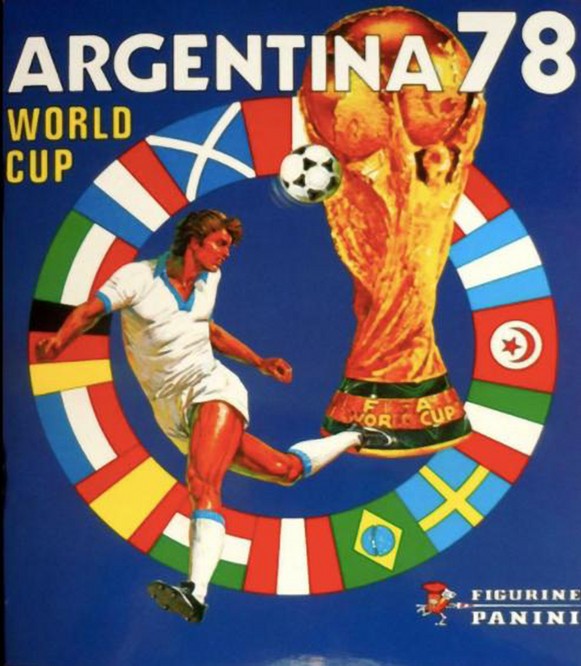
The years 1976/1977 were the moment of my footballing inception. Years zero for my lifelong love of the game. The previous autumn I had been taken to my first football match by my brother. Friday, September 24, 1976, to be precise. The day after my eighth birthday. Cardiff City v Millwall at Ninian Park.
What possessed my parents to allow their youngest child to attend a game between two sides famed as much for their off-field antics as those on it, I’ve never quite figured out.
However, the roar of the amorphous tribal mass, ebbing and flowing across the giant (to my eyes at least) Bob Bank terrace, the glowing atmospherics of a floodlit game and that classic blue kit with go-faster yellow and white stripes was sugar for my succour.
The score on the night was 0-0 (despite the Millwall end repeatedly gesturing with their fingers to tell us they had scored two goals). The arrests off it were no doubt considerably higher.
Football then, like most young boys my age, was the epicentre of my world (that and the music of the Jam and Madness, but that’s a musical rites of passage for another time). And among my footballing world which revolved around, in no particular order, Gola football boots, Roy of the Rovers comics, Adidas holdalls and Shoot magazine League Ladders, the 1978 World Cup collection issued by Italian sticker manufacturer Panini was, for several months at least, where my pocket money neatly filtered like some pre-pubescent money laundering scheme.
The memory is hazy and the details even sketchier, but I remember my junior school awash with stickers. Everyone had them and lunchtime trading was as fast and furious as any busy market stall – the Olympic-level bartering for our most needed and those all-elusive shinies intensely played out in the playground.
Such was the demand that I clearly remember my local newsagent in Trowbridge – in the east of the Welsh capital – quickly sold out of the prized items and my brother and I had to make the trek behind enemy lines into neighbouring Llanrumney for a raid (all paid, of course) on the bigger newsagents who had more stock.
This was the moment that the parameters of my football learning leapt out of my locality and scaled international borders. They even had pages for those countries which hadn’t qualified with five stickers representing Wales (a shiny badge, John Toshack, Joey Jones, Terry Yorath and Leighton James to be precise), just to rub salt into the wounds.
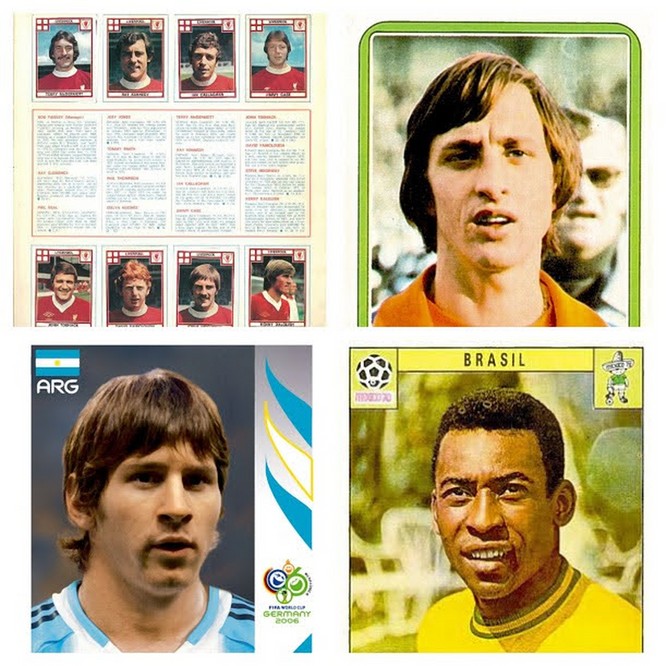
Nevertheless, the participating countries and their exotically-monikered star names were a geographical world of wide-eyed wonder to this little kid (save Scotland, of course. I set fire to their pages).
Those names are now legends in the annals of footballing folklore – Paolo Rossi, Zico, Michel Platini, Hugo Sanchez, Karl-Heinz Rummenigge, Zbigniew Boniek, leapt out of the pages of my sticker album and onto the screen.
The excitement was palpable, the action undeniable. 40-yard screamers abounded, ticker tape rained down from the stands and even Archie Gemmil got in on the act with a slalom run that turned Holland’s defence inside out.
I had little knowledge or comprehension of the political controversy that had dogged the lead up to the World Cup, but it was undeniable that as a spectacle, well, it was spectacular.
That long yearning then for Wales to qualify for a major international tournament was forged at an early age, but I thought failure would forever be forged in my DNA. I was there at Ninian Park in 1985, Arms Park in 1993, Millennium Stadium in 2003, the hurt cut deep until I made peace with myself, that this was our lot and we would never qualify for anything in my lifetime.
That’s why the glory of 2016 made so many grown men cry. The night we qualified I was watching the Alarm play a spectacular concert at the Wales Millennium Centre, fusing the sensory experience of Mike Peters’ preternatural musical skills with an earplug firmly embedded in one ear listening to Radio Wales commentary out in Bosnia.
When qualification was assured despite defeat, I whooped, hollered and cried, those around me wondering whether to hug me or call the police.
What turned me to tears again was that sweet announcement by Panini in the lead up to the tournament that Wales were to have their own sticker album. The joy was unrequited. I was thrilled, delighted and any other superlative you want to choose to chuck at the news.
It seemed that all those Panini kids who had grown up in Wales, now middle-aged, were channelling the excitement of their youth. Understandable, given that us long-suffering fans of the international side guessed they had more chance of witnessing the Loch Ness Monster being ridden by Richey Manic than witnessing Wales in all their shiny sticker glory.
There was much clambering to revisit our callow youths and once again snap up the stickers that were the staple of every little boy’s ‘got, got, need’ rites of passage.
Now, with qualifying for another tournament finally upon us (and who thought any Wales fan of a certain vintage would ever utter those words), the issuing of a new sticker album has once again caused a certain level of euphoria amongst our fanbase.
For this particular father, the love of stickers has been passed on to his daughter, who is now excitedly filling her album.
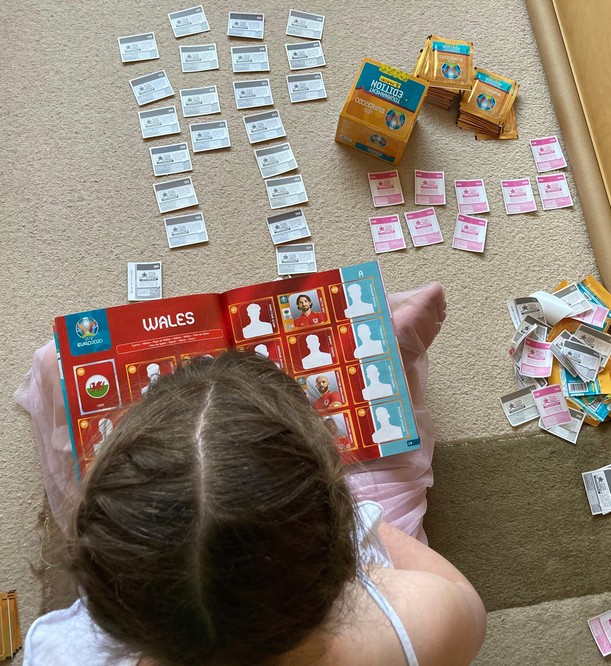
While her enthusiasm is admirable, a warning to parents to remember to teach your children that it’s not riding a bike, tidying their bedroom or working hard in school that is utmost in their educational rites of passage, it’s how to master the art of placing a sticker in an album straight.Once mastered, you can trust them to not leave your prized album looking like a car crash of cubist art, an angular breakdown for which there is no emergency service.
For now, there appears to be no let up in the attraction of stickers. In this digital age it would be impossible to think about launching something as analogue as a sticker album, but the appeal of Panini football stickers continues to endure, that misty-eyed nostalgia strong enough to be passed on from generation to generation.
That sort of emotional connection is something that a new brand could never simply just conjure up – it can’t be bought. You need time, heritage and authenticity to pull that off, regardless of platform.
Panini stickers have been a staple of playground life for decades, elevated to the arena of nostalgic heirloom, where a father will gleefully pass on to his children the tradition of collecting.
That excitement and curiosity is part of Panini’s enduring appeal – it keeps anyone who’s started the journey reaching for more until it’s complete.
While Panini have dipped their toes into digital, offering a companion collectors’ app that allows photographed real sticker collections to be tracked and traded, it’s just not the same. Let’s be honest, the digital experience lessens the whole emotional connection that you get with a real, printed album and actual sticker packs.
There’s an innate appeal involved with the joy of that which is impossible to replicate in any other way. It’s the emotional and sentimental attachment which has given the Panini brand and its associated stickers and books such longevity.
So, enjoy the journey, Wales fans. We really are living in unprecedented times. Just don’t tell your wife how much you’re spending on stickers.
This article first appeared in the Western Mail
Support our Nation today
For the price of a cup of coffee a month you can help us create an independent, not-for-profit, national news service for the people of Wales, by the people of Wales.





